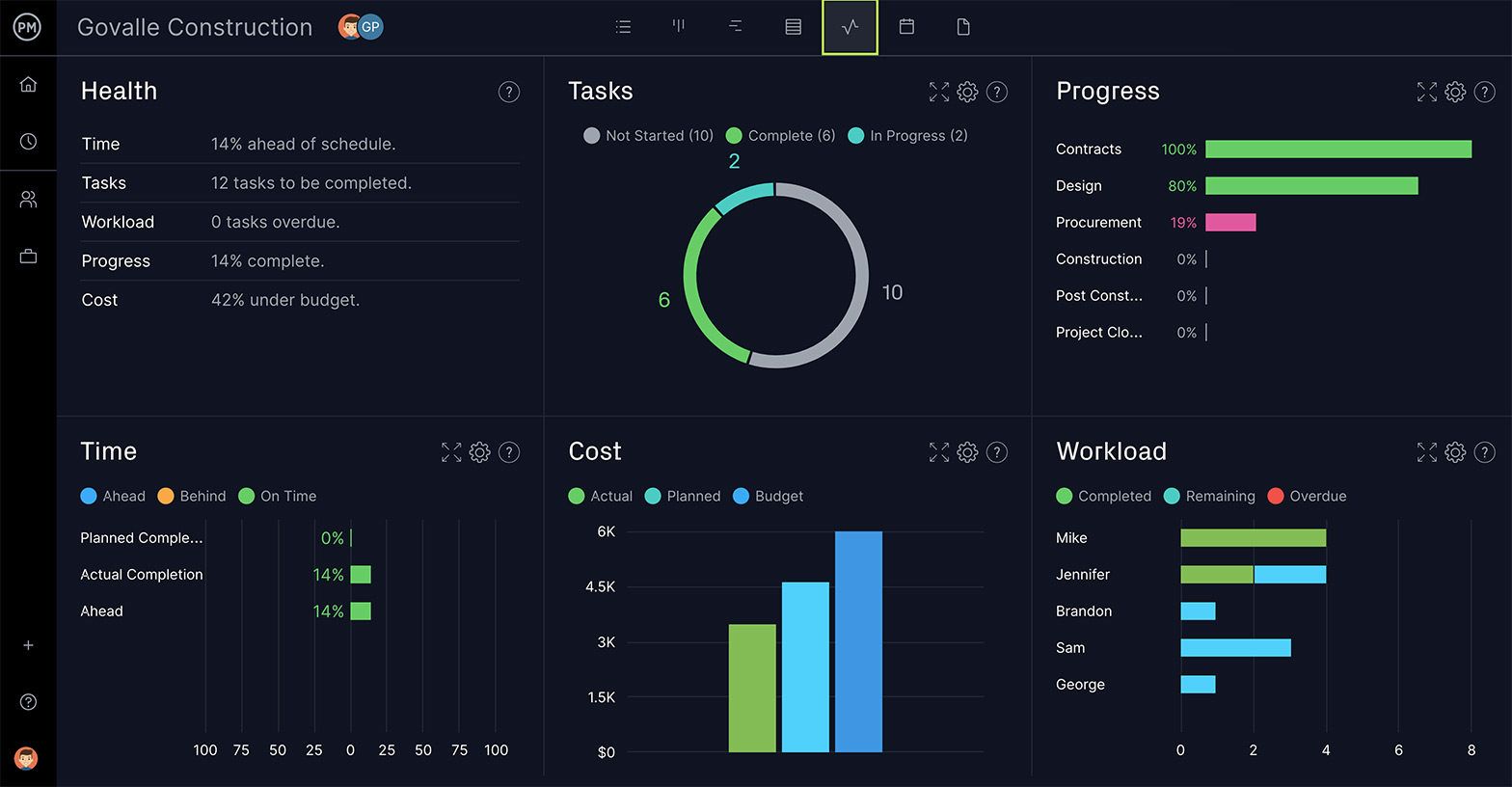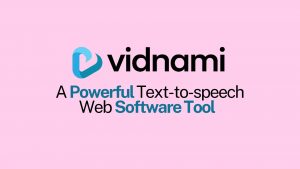Of course, the path to launching a new software product successfully starts with a Proof of Concept (PoC). It’s a software development testing methodology that helps businesses make rational decisions about creating a new software product and defining its future. This initial check increases the chances of building a helpful software solution people will genuinely like to use.
Businesses and entrepreneurs often jump into product development to quickly get their solutions running. But this is a risky move that may fail. Perse, product development projects can’t move forward without evidence to support that a viable product can be produced. In that case, you need a strategic Proof of Concept (POC) plan to prove a business idea or project has legs to stand on.
By all means, the success of a software tool goes beyond the product’s original idea. If it’s poorly tested and aligned with the market needs, you may invest a lot of time and money into a development that may prove useless and won’t sell. With a proof of concept, you get evidence that your idea is feasible and an explanation of how it will work and why it’s worth the funding.
So, what is a Proof of Concept (POC) in project development? It sounds like a prototype or a minimum viable product, but that’s not what it is. We’ll compare those product development methods later, but first things first, let’s start with a Proof of Concept definition.
Understanding What Proof of Concept (POC) Entails In Project Development Plan
To enumerate, Proof of Concept (POC) is evidence obtained from a pilot project, which is executed to demonstrate that a product idea, business plan, or project plan is feasible. For example, in drug development, clinical trials are used to determine whether a new drug will be safe and effective; thus, gathering proof of concept for a final product is essential. The same applies to software.
In a strategic software development process, a Proof of Concept is a verification methodology implemented in the initial stage of the product development lifecycle. Usually, the purpose of the Proof of Concept is to test the validity of the software idea — it’s all about proving that the proposed system, application, or product can work in real life before you begin the project development.
The results of POC elements are gathered in a Proof of Concept document that helps stakeholders better understand the success criteria. But that definition doesn’t cover everything a proof of concept does. Explaining the idea collects user feedback and insights from your team members, including those who might not have otherwise contributed, mitigating unforeseen risks.
A Proof of Concept is essential to define the vision of the final product and its orientation. Because of that, it should involve all stakeholders engaged in the product development process. They meet to discuss the limitations, opportunities, and risks and agree on the project’s direction. It’s essential to lay solid ground for a smooth development process, testing, modifications, and launch.
A POC Applies In:
- Software Development
- Business Development
- Project Management
- Manufacturing, IT
- Healthcare and Cybersecurity
- among other industries.
Sometimes, Proof of Concept is confused with the Minimum Viable Product (MVP) by many beginner webmasters. A minimum viable product is an improved version of your product prototype. However, unlike a Proof of Concept, a minimum viable product is workable with basic functionalities and features. An initial idea rarely meets the demands of today’s fast-evolving markets.
In other words, a minimum viable product has only the essential features that your users would need to know what your product is like and what it does. The main difference between a Proof of Concept and a minimum viable product is that they come at different stages of the product development process and serve other purposes.
The Primary Purpose of A Proof of Concept (POC) And The Ultimate Benefits
The primary purpose of a Proof of Concept is to determine whether a new product or business idea is feasible and likely to be successful in the market before a company continues further with its development. To achieve this, a POC requires thorough research and testing. A proof of concept may also collect feedback from potential customers, investors, and the product development team.
Another purpose of creating a Proof of Concept is to check whether the software idea is technically feasible. A POC project should involve the development team that assesses what is possible and impossible and determines the correct technical direction for product development. Most fail because of insufficient funding (or the inability to raise capital) and not considering the market needs.
It can be a document, a presentation, or a demo — at this stage, no coding or design is required. However, the Proof of Concept should yield thorough requirements and technical specifications documentation. It’s usually done internally or within a narrow stakeholder group when outsourcing. The Proof of Concept is valuable because it’s a pilot project to evaluate the plan’s feasibility.
In particular, to evaluate the work plan before the process begins, similar to a prototype or lean manufacturing “minimum viable product.” A proof of concept verifies that concepts and theories applied to a project will result in a successful final product. POCs do not produce deliverables, as the core issue being considered is the feasibility of the project development.
Here are some of the main benefits:
- It gives potential investors and decision-makers valuable data.
- Determines if the project or product idea will be feasible and how useful it will be for the target audience.
- Provide teams with vital user feedback and information about market demand, target audience, and critical pain points.
- It is an essential step of product development because it’s the base for your prototype and minimum viable product.
Ultimately, products must not be just technically feasible to the end users. They must also be designed to solve real-life problems of the intended audience. If they don’t, they will fail. That’s why, for a software development company, it’s important to pace the development process by planning it carefully and testing the new idea before starting to build it.
The Simple Steps To Write An Effective Proof of Concept (POC) Document
As noted, a Proof of Concept is a project; like any project, it must be clearly defined. Even though there’s no standardized method to write a proof of concept, you’ll need to break down the Proof of Concept process into actionable steps. Creating a proof of concept in software development should yield detailed documentation describing the requirements of the project, its objectives, etc.
As well as the process and roles assigned to every stakeholder. This will be a detailed document that describes the creative process from early version to deployment. During the ideation stage, you may hear something that will surprise you, but you can also be surprised by what you don’t listen to. At this point, some of your guesswork will be clarified. This discussion should be productive.
It may involve a technical expert who will decide what is possible and what isn’t. Creating a proof of concept in software development will help owners understand their product idea’s limitations, advantages, and disadvantages. During the process, they can discover the different options and choose the best direction for their software development project. Verify initial market needs.
Creating a PoC requires identifying specific problems and pain points you intend to solve with the tool. This task aims to ensure that the product isn’t detached from reality and brings actual value to end users. The testing stage, part of this iterative process, will indicate whether you are on the right path. To help, we’ve outlined these general steps to write a Proof of Concept document.
1. Define Your Success Criteria
You must have a set of metrics or success criteria for accurate proof of concept feasibility measurements. To define the success criteria for your POC process, you can start by interviewing the client, as their satisfaction determines if the proof of concept is a success. Once you’ve established the exemplary problem-solution scenario, create a prototype of your tool. Depending on the nature of the product, this could be a mockup, a wireframe, or a simple sketch. It should demonstrate the proposed workflow, envisioned features, and the essential UI/UX.
2. Estimate Duration & Effort
When you’re working on a POC, it’s a project but not the final one. You’ll need to estimate the duration and effort put into the proof of concept pilot project. Brainstorm the potential solutions to the problems and pain points with your development team. There will likely be different ways to solve these issues. Map the vital elements, considering factors such as your budget and timeframe. Also, consider the competition—what they already offer and whether you can build on that.
3. Define The POC Scope
The scope of your proof of concept determines what’ll be done and measured in the pilot project. Defining the range for your proof of concept is critical to getting accurate results. Even if the POC is proved viable, that proof of concept is worthless if the scope isn’t correct because you failed to evaluate the project thoroughly. Remember, creating a prototype aims to show it to the target audience and gather feedback. While the previous stages would be primarily done internally, this stage is about showing it to potential users and stakeholders to understand whether it has the potential to succeed in the market.
4. Pick Your Resources
Choosing who to execute the proof of concept pilot project is as important as the planning process. You want to ensure they have the right skills to do a thorough job. Throughout the process, you will discover the actual advantages of your tool and see how intuitive it is. The testing process may also reveal features you had overlooked. Use these valuable resources and feedback to modify the device accordingly. You may repeat the process until you arrive at a satisfactory version of your software product.
5. Create A POC Roadmap
In the final step, collect all the information you’ve gathered throughout the process and document it in a roadmap for future reference. It should outline the step-by-step solution development process and the goals and objectives. Include all the learnings and recommendations for improving the whole software development process. This will be your bargaining chip for potential investors and a manual for building the product.
Some Topmost Notable Development Operations Model Examples To Consider
Making the most of investors’ funds is crucial to launching a new product. With a Proof of Concept, businesses can understand their budget requirements and how they spend the money. They can avoid a horror story in which all the capital they’ve raised is spent on a full-fledged solution that the target market finds useless.
Creating a Proof of Concept establishes a plan for building your new solution. The process helps you verify if you have picked the proper workflow and adjust it wherever necessary. By choosing the right path at the outset, you avoid surprises at later stages of the process, learn the risks, and allow yourself to prepare to mitigate them accordingly.
When a product idea is born, it’s likely based on assumptions. This point concerns finding evidence to validate these assumptions by identifying real-life problems the software will solve. If you skip this step, you may have a working tool that serves no purpose. Talk with the target audience to receive valuable feedback and identify the needs and pain points that you are about to solve.
You may want to answer the below questions:
- What are we trying to achieve, and what’s the added value?
- Or, what criteria will define the success of the software product?
- What is the timeframe, and what resources do we have?
- Is there a comparable solution, and what should be the workflow?
Convincing potential investors that your concept is valid and worth their money requires more than enthusiasm. The proof of concept explains why and how your idea will work. Successful evidence will convince even the most skeptical investors and help you negotiate your terms with other stakeholders. Below are more examples to better understand its use in different cases.
1. Software Development
In software development, a proof of concept is used to establish if creating a piece of software is viable. To do so, development teams must select who needs this software, what problems it would solve, what’s required to develop it from a resource standpoint, and whether it’s technically feasible to create it. The software development team will brainstorm and interview potential users to understand better what the software should be like. In addition, when starting any product, the team should look into competitors’ existing solutions. These findings will then be put into a proof of concept document explaining whether the software should be created by demonstrating its technical feasibility, business impact, and potential to succeed in the market.
2. Product Development
When companies develop a product, some attributes and requirements are expected, such as cost, functionality, quality, and durability. Before creating a prototype, product development teams will conduct research and testing to establish whether developing such a product is feasible. Then, they’ll compile their findings in a proof of concept document that’ll be used to show internal and external stakeholders that the product can be developed. Finally, they’ll get approval for building a prototype and moving on with the product development process.
3. Business Development
Similarly, in business development, a proof of concept refers to the testing and research conducted to determine whether a business plan is feasible to convince potential investors to fund it. For example, some new businesses develop breakthrough production processes or technologies that have the potential to be efficient and profitable. These new businesses often need funding to achieve their ambitious goals. However, they must first conduct trials and gather proof of concept to show that the process works to ask for financing from the government or private investors.
4. Marketing And Sales
In marketing and sales, a proof of concept is a product demonstration to validate initial assumptions from market research. Once you’ve determined who’s the target market for your new product and what the pain points your product will solve, you might conduct focus groups, surveys, or presentations as a proof of concept exercise. These can help determine whether your assumptions about your target market and the potential success of your product were correct or if, in the opposite case, your marketing planning needs more work.
5. Project Management
Projects take many different forms, so the proof of concept process might vary slightly from one task to another. However, in general terms, a proof of concept in project management is used to demonstrate that a project idea can be implemented in the real world and whether its final deliverable is attainable. The main goal of a project POC is to use research and testing to verify whether the methods and technology used in the project are likely to work before investing financial resources into it.
The Main Proof of Concept (POC) Vs. Prototype Difference In A Project Layout
Proof of Concept might sound like building a prototype, but there are differences, and each has its function. In other words, POC is a small project to test the idea: it exists solely to show that a product concept is functional and can be developed. Creating prototypes is another essential exercise. The creation of prototypes is done to help visualize how a product will function in the real world.
It shows the design, navigation, layout, etc. Therefore, a proof of concept shows that a product idea can be made, and the prototype shows how it’s made. That doesn’t mean these two concepts are mutually exclusive. They share some common ground.
That’s because proof of concept shares user feedback with the team, allows them to investigate emerging technologies, and shows investors and decision-makers that the idea works. Once the POC has proven the project is viable, often a prototype is created.
Start Reporting On A Proof of Concept (POC) With ProjectManager System
These are the basic parameters that make up a successful proof of concept. The results of your pilot project must be disseminated. If the communication is messy, no one in the project team will know about the proof of concept. There’s a lot of POC data to be collected, which means many numbers to crunch. ProjectManager can help—it’s an online project management software.
The software has the most accurate data to keep your POC on track and the full-fledged project progressing as planned. Scheduling with online Gantt charts, visualizing workflow on Kanban boards, and a real-time project management dashboard are just a few of our features. See them all and how they can help you lead your project to a successful end by taking this free 30-day trial today.
All three of the project management views instantly reflect these status updates. These status updates turn into colorful charts and graphs on our real-time dashboards that note progress, task status, workload, and more. Project managers can keep the POC process on track, and when it’s time to present their POC results, filter the graphs and charts to show just the data the client needs.
In Conclusion;
As a rule of thumb, Proof of Concept (POC) is critical for the business product or brand software development. POC is the project before the prototype, minimum viable product, and final product. Access to the proper project management tools can help get the job done right, regardless of scale. A POC is a critical project that can determine the viability of your actual project later on.
In layman’s language, Proof of Concept is the first step businesses can make toward creating a successful and valuable software product. Software development services can assist you in verifying your business idea and provide you with experienced developers and product managers who will make sure to bring a successful product to life. One of the most prominent POC examples is Walmart.
Especially its application of blockchain technology to improve the traceability of products in the food supply chain. With IBM, its technological partner, the company ran two Proof of Concept projects: one focused on tracing mangos in U.S. stores and the other on tracing pork in China. The proposed blockchain-powered solutions worked, allowing Walmart to speed up the tracking process.
With that in mind, give yourself and your team the right tools to ensure you do everything possible to deliver results. Fortunately, ProjectManager has everything you need to plan and execute a convincing proof of concept. By all means, the tool helps you design tangible plans with Gantt charts, run with task lists and Kanban boards, and track real-time progress using dashboards.










Is it still for sell ? How much is it ? If for rent how much for that ?
Gorgeous penthouse. Gorgeous ❤️❤️❤️
Your stewardship of these instruments and zeal to make
them known is greatly appreciated.
@Ernest Colten trying it out now. Looks to be working 🙂